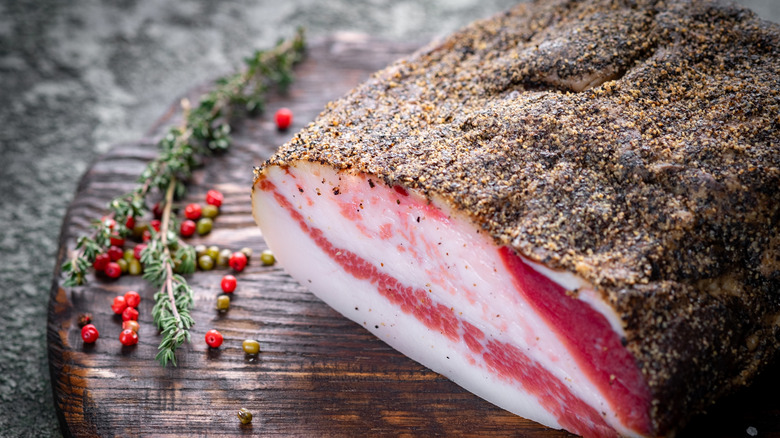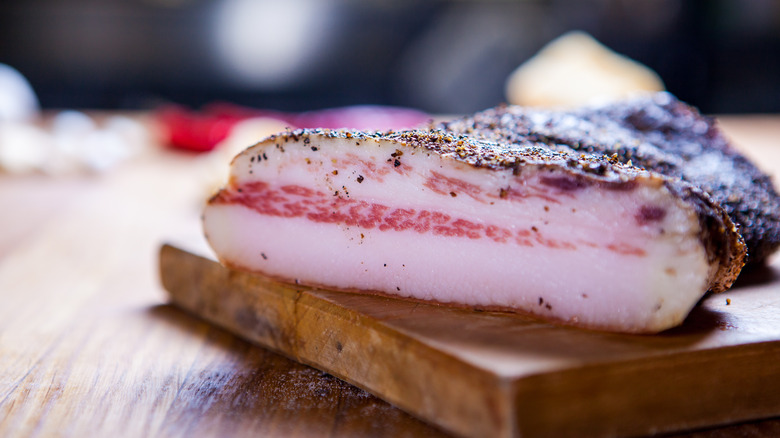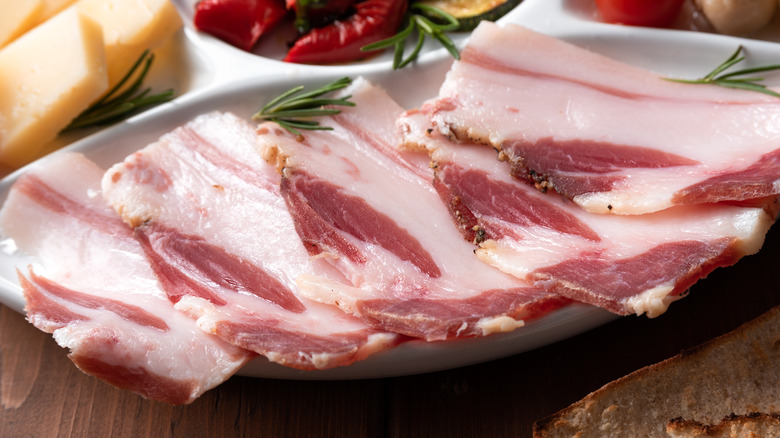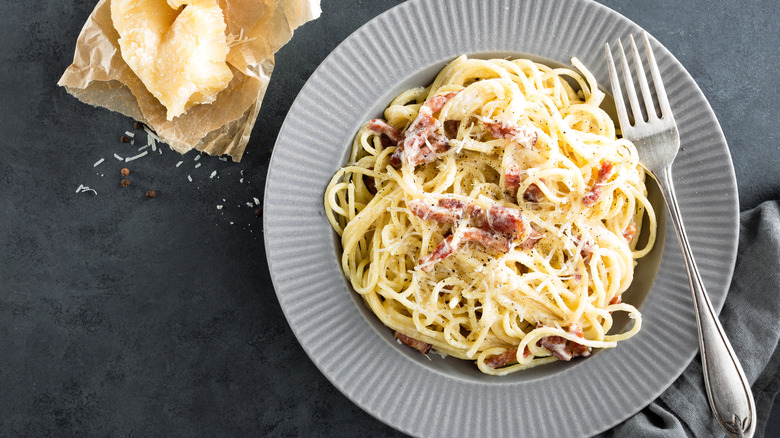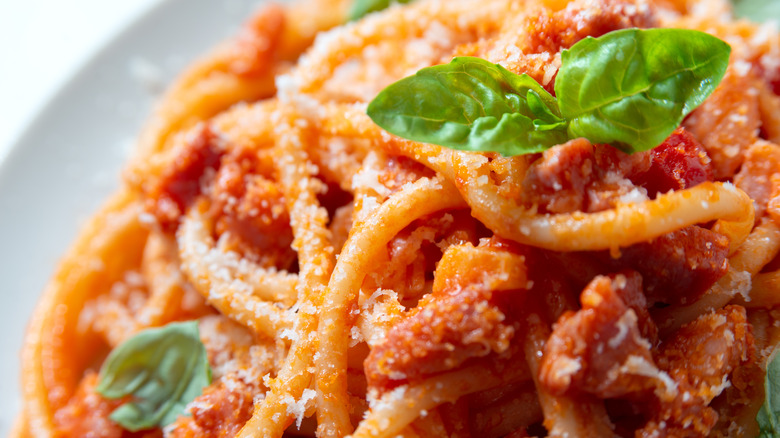What Is Guanciale And Why Is It So Expensive?
It is fair to say that people from all over the world love bacon. There are a few differences though when comparing the kinds of bacon people eat depending on where they're from. For example, in Italy, two of the best kinds of bacon they eat are pancetta and guanciale, per LivItaly Tours. One you have probably heard of more than the other.
In America, the bacon is not even from the same cut of meat as the ones most Italians consume; it usually comes from the pig's belly. Guanciale, on the other hand, comes from the jowl of the pig, which is where the jaw area is located (via LivItaly Tours).
When you think of super thick, hefty pieces of bacon, you probably imagine pancetta. But in Italy, guanciale is an absolute favorite. In fact, there is apparently an ongoing rivalry between the two, but Due Cucina says guanciale takes the win in this case.
What exactly is guanciale?
As you now know, guanciale is pork that comes from the jowl of the pig, which is actually the cheek. It's an incredibly delectable piece of the pig that is seasoned with salt, pepper, sage, rosemary, and garlic. This dry rub is what is on the skin of the meat and aged for three months to get that incredible flavor, per LivItaly Tours.
This cut of meat is a specialty in Italy. Due Cucina says the flavor and texture of guanciale is what sets it apart from its cousin, pancetta. When cooked, the robust flavors emerge as the fat slowly melts away. This makes it no competition for the best flavor profile. They also explain that the texture is much softer, making it even more special.
The cut of meat is fatty and rich, giving each bite a savory bust of flavor that's salty and smooth. It's no wonder why it's so appealing to many foodies.
How much does it cost?
Depending on the amount, the prices for this cut of meat can really vary with online orders starting at $35 for 5 pounds and some places like Mercato charging $20.99 per pound. If you live in America, you might be wondering why it costs so much.
One of the main reasons is that this cut of meat was not able to be imported from Europe for quite some time due to a ban put in place by the FDA, meaning that finding it in the States would prove to be much more difficult than finding it in Italy (via LivItaly Tours). Fortunately for guanciale fans, that ban was lifted in 2013 and you can now get guanciale in the states, per Bacon Is A Food Group.
Granted, getting it fresh rather than imported will definitely taste better. It is best to get this cut of meat at an Italian grocery store or online. Be careful, though, when ordering, as it could come smoked or unsmoked.
How to cook with guanciale
To give you a baseline of what you can do with this cut of meat, think about pasta. The three top pasta dishes this ingredient can be used for are carbonara, amatriciana, and pasta alla gricia. These dishes are called "the Roman holy trinity of pasta," per La Cucina Italiana.
While it is common to see pancetta used in dishes like carbonara, guanciale's flavor and texture are proof that it's the perfect addition. When you get your cut of meat, you want to start by slicing it into strips and browning them in a pan, the same way you would with regular bacon. A key tip: Place them in the pan when it's cold, so the fat doesn't burn right away (via La Cucina Italiana).
It is a very simple piece of meat to cook. Once browned, take it off the heat and add to any sauce you want and place over pasta of your choice. While it is possible to bake this piece of meat, the best way is always in a pan on the stove.
For the above pasta dishes, it is always added into the sauce last and then the pasta is tossed with it. Remember that this is a salty piece of meat. In fact, most recipes don't call for salt in the pasta water when working with guanciale.
Is it good for you?
You've probably already assumed that guanciale is not at all good for you to eat. But as with everything in life, moderation is key. It is common knowledge that bacon is bad for you and any nutritionist will say to not consume it on a daily basis. Since any kind of bacon is high in fat and cholesterol, serving sizes should be small, according to Healthline.
There are 961 calories in one cup of guanciale, says Food Count. While the daily recommended calories vary for everyone, a cup of bacon may not be the best idea. On top of that, there are 64 grams of fat, 280 milligrams of cholesterol, and 3,441 milligrams of sodium.
In a cup, there are 64 grams of protein, which is one of the few benefits offered. There are no vitamins or calcium, but 16% iron (via Food Count). Even so, enjoying a dish made with guanciale is something Italians would recommend anyone to try.
